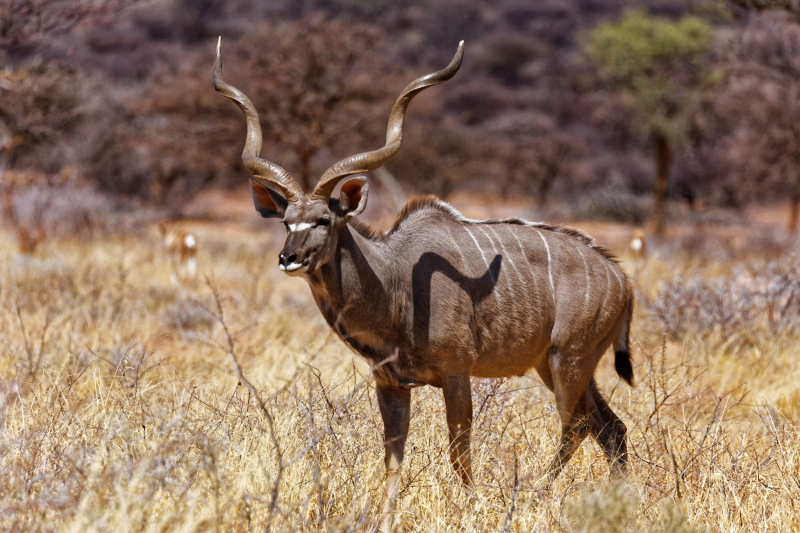Kudu
The Kudu, a group of large and elegant antelopes belonging to the genus Tragelaphus, are iconic inhabitants of the vast African savannas. Renowned for their striking spiral horns and graceful appearance, Kudus are not only a symbol of the African wilderness but also showcase the captivating beauty of the continent's diverse ecosystems.
Kudus are characterized by their majestic and distinctive physical features. Both male and female Kudus boast long, spiral horns that can reach impressive lengths, with the male's horns typically being larger and more twisted. The coat of a Kudu varies in color, ranging from grayish-brown to reddish-brown, and they often display distinctive white markings on their face and body.
There are two main species of Kudu: the Greater Kudu (Tragelaphus strepsiceros) and the Lesser Kudu (Tragelaphus imberbis). The Greater Kudu is the more widely distributed species and is found across various regions of eastern and southern Africa, including countries like South Africa, Namibia, Zimbabwe, and Tanzania. The Lesser Kudu, on the other hand, is restricted to parts of East Africa, including Kenya and Ethiopia.
Kudus are highly adaptable and can thrive in a range of habitats, including woodlands, grasslands, and savannas. They are often found near water sources, and their nomadic nature allows them to traverse extensive territories in search of food and suitable habitats. Kudus are primarily browsers, feeding on leaves, shoots, and fruits, and their elongated necks and flexible lips enable them to reach high branches.
Kudu herds typically consist of females and their offspring, while males are often solitary or form small bachelor groups. During the breeding season, known as the rut, male Kudus engage in impressive displays of dominance to establish mating rights. These displays involve posturing, vocalizations, and the clashing of their formidable horns.
Kudus face predation from large carnivores such as lions, leopards, and hyenas. To evade predators, Kudus rely on their keen senses, including excellent hearing and eyesight. When threatened, they can reach impressive speeds and navigate through dense vegetation with agility, making them challenging prey for predators.
















